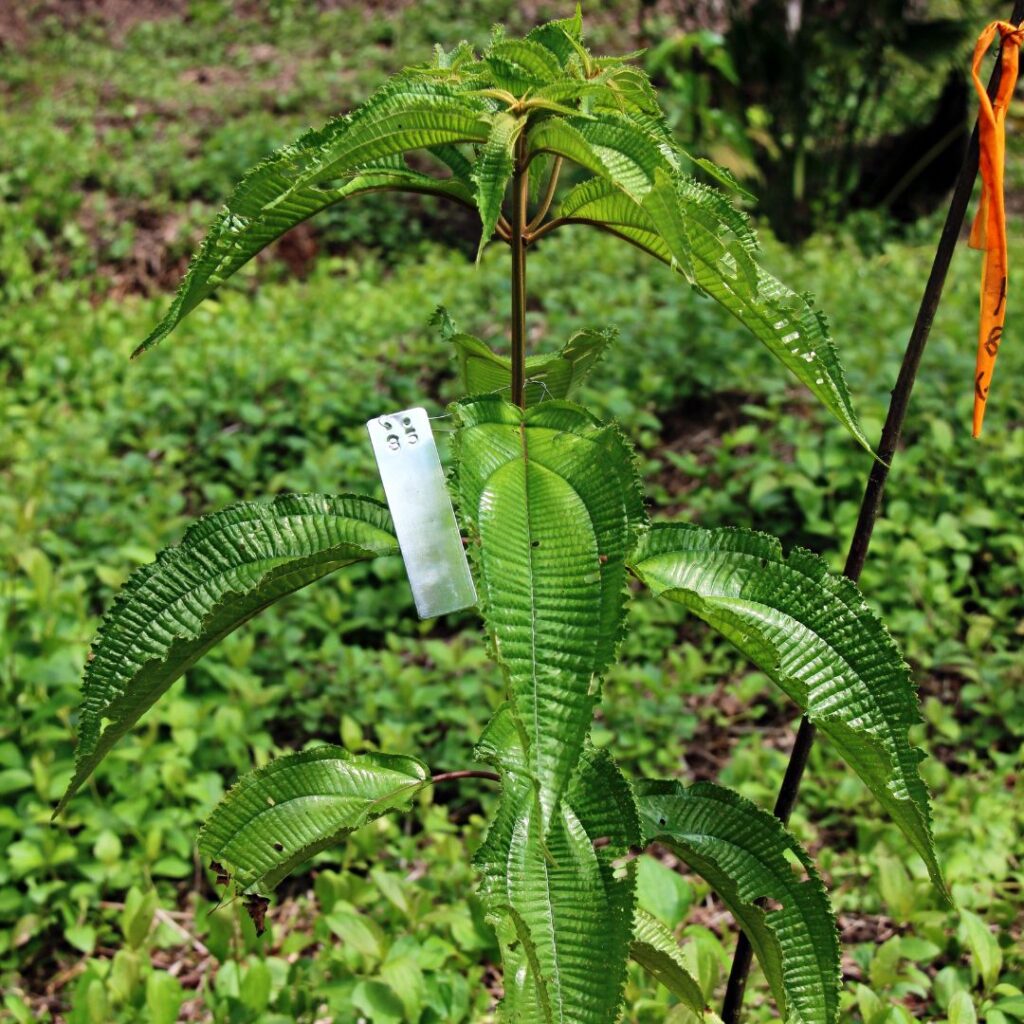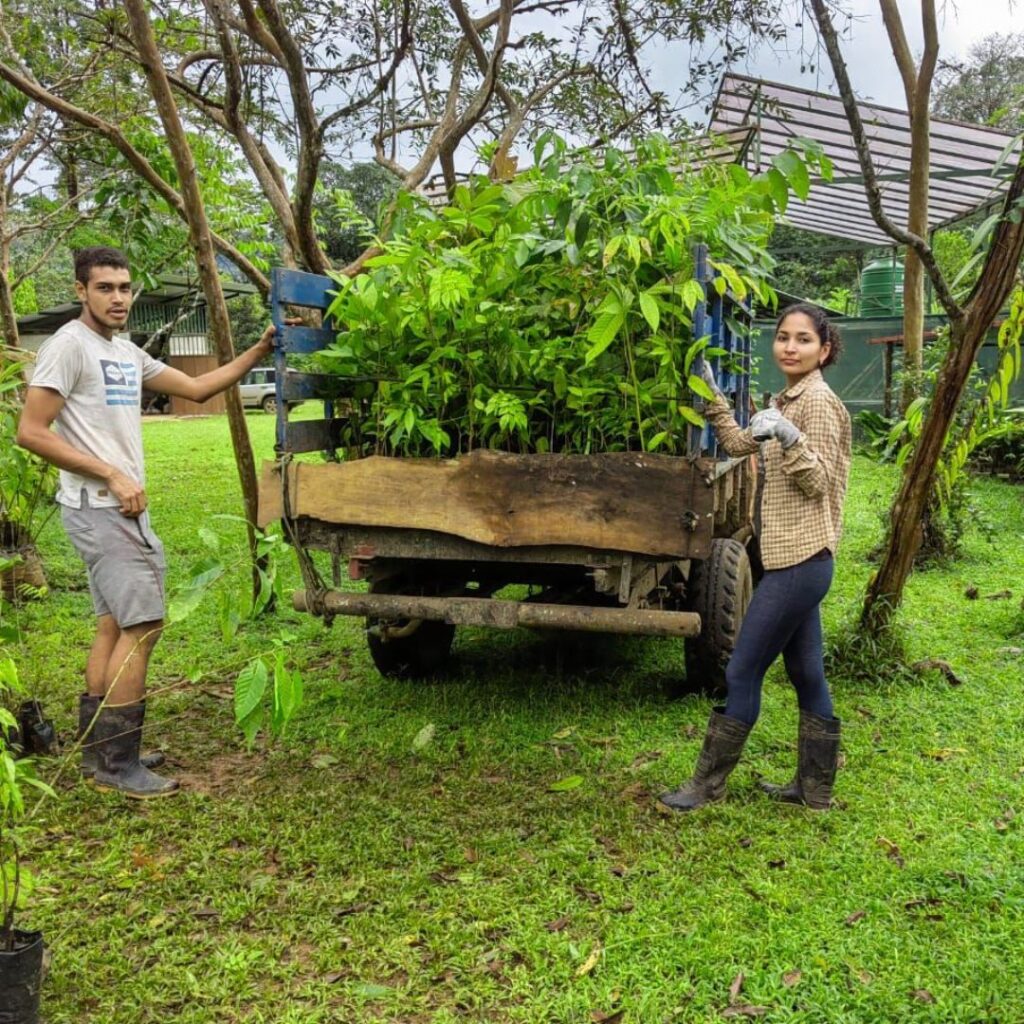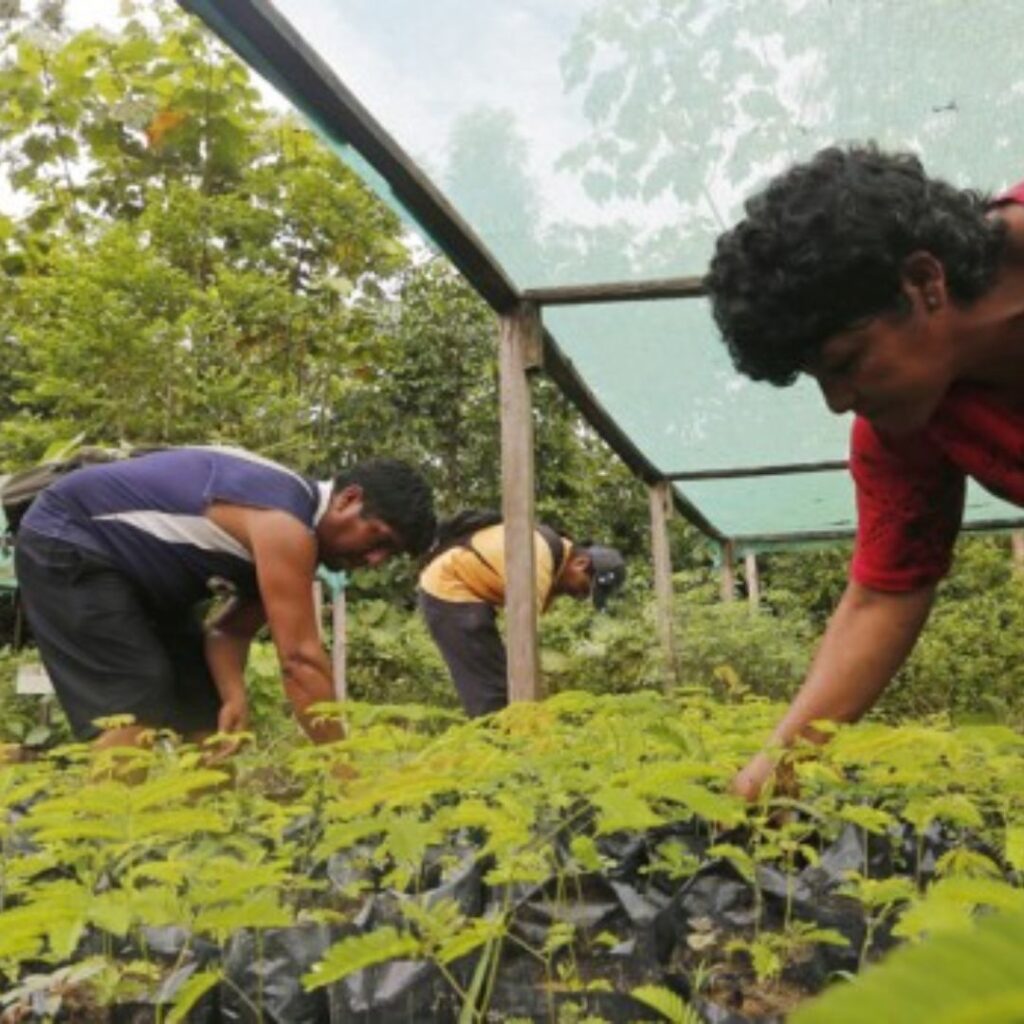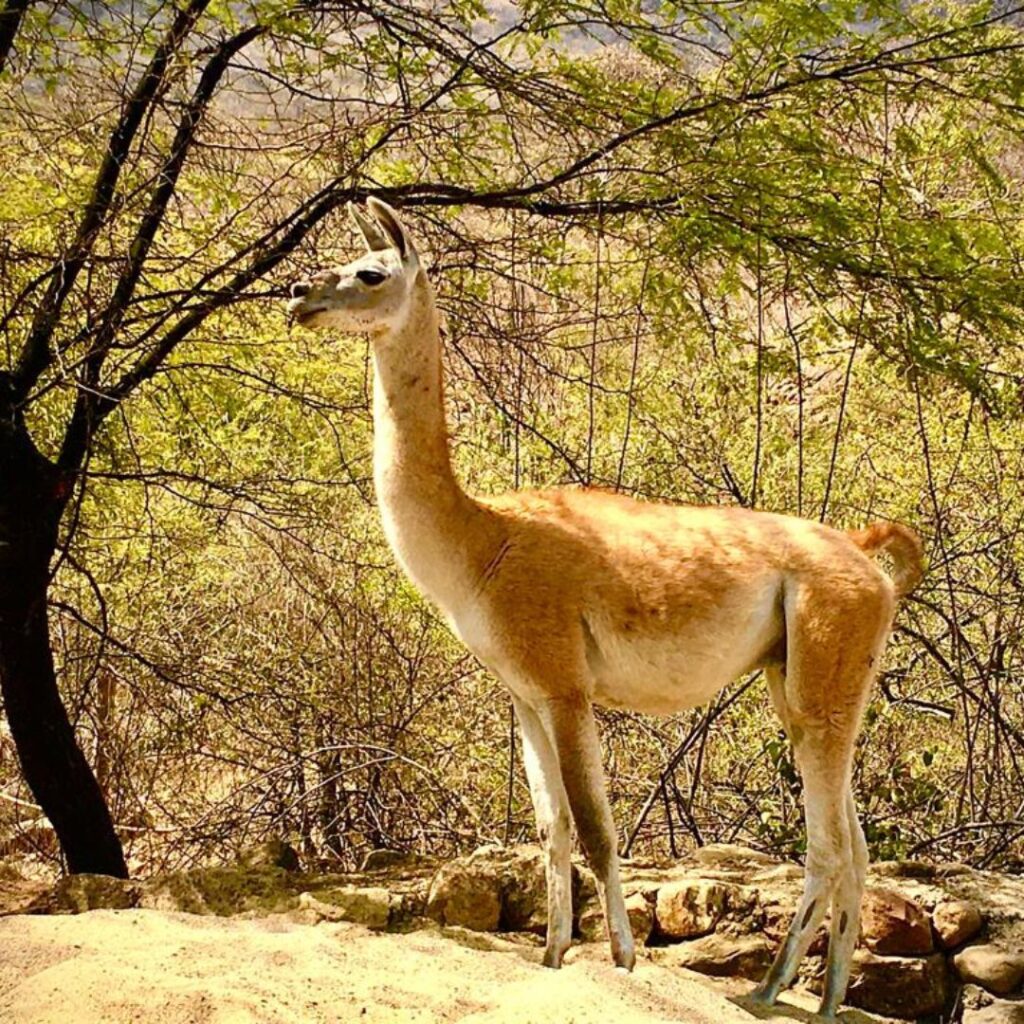A Call to Action and Reflection
As we celebrate the International Day of Forests this Thursday, March 21st, it’s more than a moment for contemplation—it’s a rallying cry for proactive engagement. This year shines a spotlight on Sustainable Development Goal 15: Life on Land, emphasizing forests’ pivotal role in sustaining biodiversity, underpinning ecosystems, and preserving the delicate balance vital to our planet’s wellbeing.
In the face of global challenges like climate change and environmental degradation, initiatives such as the Green Initiative Climate Positive Certification and the Forest Friends Certification are notable for the dedication of businesses and individuals to reforesting and rejuvenating essential ecosystems in some of the planet’s most biodiverse areas.

Pioneering Reforestation Efforts
The verdant expanses of the Península de Osa in Costa Rica, stretching to Tambopata and Chaparrí in Peru, are witnessing the seeds of hope and rejuvenation being sown by Green Initiative Forest Friends. These regions, renowned for their abundant biodiversity, are transforming into symbols of hope and regeneration through the joint efforts of local communities, businesses, and the emerging field of regenerative tourism. The backing from these entities magnifies the impact of reforestation projects. It serves as a blueprint for sustainable development that can inspire others.
Peninsula de Osa, in Costa Rica, houses 2.5% of global terrestrial biodiversity.
Peninsula de Osa is considered one of the most biodiverse regions, harboring 2.5% of the global terrestrial biodiversity. This megadiversity has received the region’s attention from biologists, primatologists, botanical collectors, and conservationists. It has the most significant wetland ecosystem and mangrove forests in Central America.
By planting trees on Peninsula de Osa, we aim to protect animal and tree species, including several threatened species from the IUCN Red List, such as the endangered Central American Squirrel Monkey, also known as Mono Titi, which is threatened mainly by deforestation for agriculture and development, leading to a decline in their extent of occurrence and area of occupancy of 60% over the last 27.5 years. Our restoration initiative aims to reinforce the growing wildlife corridor between the Osa Peninsula and the Talamanca Mountains, which the Osa Conservation Project protects. Local inhabitants receive training and incentives to preserve the ecosystem and engage in sustainable harvesting practices as part of our restoration efforts.
Click here to become a Forest Friends certified partner or individual.










Tambopata, in Madre de Dios, is a region considered to be the capital of biodiversity in Peru, representing 5% of all biodiversity in the world.
The Madre de Dios rainforest is formed by a tremendous Amazonian plain or low jungle; it is one of the wealthiest life formations on earth, with a high plant biodiversity of up to 300 tree species/ha (Gentry, 1988). The department of Madre de Dios has been given the title of “Capital of Biodiversity of Peru” through Law No. 26311, in the merit of its natural wealth.
By planting trees in Madre de Dios, we aim to protect animal and tree species, including several threatened species from the IUCN Red List, such as the Jaguar, which is threatened by suspected declines of 20-25% in its population caused by habitat quality decline or fragmentation. Since 2008, the threats to the Jaguar, on a global scale, have continued or intensified. Therefore, our restoration efforts aim to reinforce the Vilcabamba Amboro wildlife corridor that spans the southeastern region of Madre de Dios. Local inhabitants receive training and incentives to protect the ecosystem and engage in sustainable harvesting practices as part of our restoration efforts.
Click here to become a Forest Friends certified partner or individual.










Chaparrí, in Lambayeque – Peru, is a region with underrepresented dry forest ecosystems.
The Chaparri Ecological Reserve, located in the Equatorial Pacific region in Peru is a seasonally dry forest managed by the Muchik Santa Catalina Community of Chongoyape. Seasonally dry forests are amongst the most endangered ecosystems, with less than 10% of their original extent remaining in Latin American and Caribbean countries. The Equatorial Pacific region is also known for a remarkable species richness and level of endemism.
By planting trees in Lambayeque, we aim to safeguard animal and tree species including several threatened species from the IUCN Red List such as the Andean Bear which is threatened by habitat degradation, given an approximate 30% of habitats are unsuitable for inhabitants due to lack of connectivity. Habitat suitability is also greatly decreased by human development activities including but not limited to; exploration for oil or expansion for agriculture. Therefore, our restoration efforts aim to reinforce the underrepresented ecosystems in the Chaparri Ecological Reserve. This reserve is in dire need of conservation due to several incidences of urban invasion and extended periods of drought. As part of our restoration efforts, local inhabitants receive training and incentives to protect the ecosystem and engage in sustainable harvesting practices.
Chaparrí Emblematic Species
Wildlife: Andean Bear, Andean Condor and the Puma.
Flora: Palo Santo, Sapote and Huayacan.
Click here to become a Forest Friends certified partner or individual.






















Strengthening Environmental Conservation Through Partnership
The collaboration from businesses and individuals in environmental initiatives highlights the significance of united efforts in conservation. Those organizations investing in reforestation not only aid in carbon offsetting but also exhibit a commitment to corporate social responsibility, bolstering their brand and engaging stakeholders. Meanwhile, the Travel and Tourism Market represents an enormous opportunity for more tourists to positively affect the ecosystems they visit, ensuring their environmental footprint is beneficial through Regenerative Tourism.
Regenerative tourism is an approach to travel and tourism that goes beyond the principles of sustainability. Instead of merely seeking to minimize the negative impacts of tourism on the environment and local communities, regenerative tourism aims to actively improve and regenerate the ecosystems, cultures, and economies of the destinations visited. It focuses on meaningful experiences that foster a deep connection between tourists and the destination, encouraging a sense of responsibility and participation in local conservation and cultural preservation efforts. It promotes practices that restore nature, rebuild social systems, and revitalize economies in ways that are holistic, inclusive, and forward-thinking.
Businesses across the tourism sector, including accommodation providers (e.g. Inkaterra Hotels and Estancia Mimosa Ecoturismo), tour operators (e.g. Kuoda Travel, Tulu Travel, Swetours , My Costa Rica and Grupo Rio da Prata) can collaboratively drive regenerative tourism by adopting practices that actively improve and restore the environmental, cultural, and economic health of their destinations. With the Green Initiative guide for businesses and destinations youu will learn how to adopt Glasgow Declaration practices and decarbonize tourism. Download The Climate Action Guide for Tourism Businesses and Destinations: Regenerative Tourism: Building Tourism Back Better.
UN Restoration Flagships: Leading the Way in Forest Conservation
The International Day of Forests reminds us of the importance of backing United Nations world restoration flagships to rehabilitate degraded lands and forests worldwide. These flagships are essential for meeting global biodiversity objectives, tackling climate change, offering innovative solutions, and rallying support for expansive restoration endeavors.
In a groundbreaking initiative that marks a significant shift in environmental conservation strategies, countries in the Mediterranean region are now focusing on wildfire prevention rather than merely combating fires, as part of the Silva Mediterranea’s Restoring Mediterranean Forests Flagship. This effort, aimed at rejuvenating forest ecosystems, employs enhanced forest management techniques to increase biodiversity, bolster resilience, and provide additional income for local communities. The collaborative endeavor is on an ambitious path to restore 8 million hectares of forest land by the year 2030.
In celebration of the International Day of Forests, the unveiling of the first feature story on a UN World Restoration Flagship for this session has been announced. This spotlight on the Restoring Mediterranean Forests initiative seeks to raise awareness and garner support for the project. The public is encouraged to join in spreading the message and contributing to the global effort of forest restoration.


Compromise and Conservation: Ensuring a Sustainable Future
The essence of these initiatives is compromise—striking a balance between development and conservation to avoid jeopardizing our planet’s future health. The advantages of such a balance are substantial, from preserving biodiversity and safeguarding water resources to boosting local economies through sustainable tourism and agriculture.
A collaborative approach towards sustainability and conservation is essential for fostering a sustainable future. By incorporating Climate and Nature Positive into their operations and ethos, business can champion a future where economic activities do not compromise the planet’s health. Adopting a unified strategy for sustainability and environmental preservation is critical in building a future that harmonizes economic progress with the well-being of our planet. Businesses that weave Climate and Nature Positive practices into their core operations and values are at the forefront of shaping an economy that safeguards the earth’s health. This movement spans a broad spectrum, from educational entities like the CEPA Foundation to a diverse array of industries, including Mapfre in insurance, MSC in transportation, Luz del Sur in energy, WorldXchange in financial services, adidas (PE) in apparel manufacturing, and Bio Amayu in food and beverage. Each plays a pivotal role in ensuring that economic development is achieved without compromising environmental integrity.
Celebrating Iternational Day of Forests: A Commitment to Our Planet
In commemorating the International Day of Forests, we are called to reaffirm our dedication to protecting and revitalizing the earth’s lungs. It’s an appeal for participation from everyone, including individuals, businesses, and governments, in this global endeavor. By supporting efforts like the Green Initiative Forest Friends and the UN restoration flagships, we contribute to a greener, more sustainable future. Let’s view compromise not as a constraint but as a means to achieve harmony between humanity and nature for the wellbeing of our planet and its diverse inhabitants.
Join the Movement: Support Reforestation in Península de Osa, Tambopata, and Chaparrí
Now is the time to make a difference in the fight against climate change and biodiversity loss. You have the power to contribute to the preservation and restoration of some of the most biodiverse regions on our planet—the Península de Osa in Costa Rica and Tambopata and Chaparrí in Peru.
By supporting reforestation initiatives in these areas, you’re investing in the future of our planet. Your involvement can spark significant change and in spreading the word. Embrace this opportunity to be part of a global community committed to turning the tide on environmental degradation. Act now, support our efforts in these critical ecosystems, and be a beacon of hope and regeneration for our world. Let’s work together to ensure a greener, more vibrant Earth for future generations.
Click here to learn more and become a Green Inititive Forest Friends certified partner or individual.
Written by Yves Hemelryck, from the Green Initiative team.

